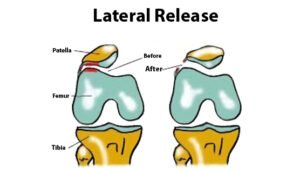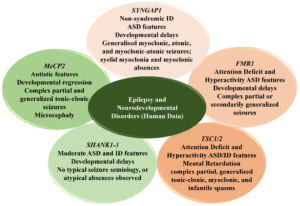Peripheral Neuropathy
Understanding Peripheral Neuropathy
Peripheral neuropathy refers to a medical condition in which the peripheral nerves—those located outside the brain and spinal cord—are damaged. These nerves connect the central nervous system to the rest of the body, helping regulate both voluntary movements and involuntary functions like heart rate and digestion. When these nerves are impaired, it can lead to a range of symptoms including pain, numbness, muscle weakness, and unusual sensations, primarily in the hands and feet.
Can Peripheral Neuropathy Be Cured?
While complete recovery is not always possible, peripheral neuropathy can often be effectively managed through proper treatment. The key lies in identifying the underlying cause and choosing the right strategy to control symptoms and slow progression.
Types of Peripheral Neuropathy
Peripheral neuropathy is broadly categorized based on how many nerves are affected and the root cause of nerve damage.
Mononeuropathy
Mononeuropathy involves damage to a single nerve. It is typically localized and may worsen with specific movements or pressure.
Common Causes of Mononeuropathy:
-
Carpal tunnel syndrome
-
Axillary nerve palsy (often from shoulder dislocation)
-
Brachial plexus compression (from crutches use)
-
Nerve injury due to radiation
Polyneuropathy
Polyneuropathy affects multiple nerves throughout the body, often symmetrically. Symptoms usually develop gradually and are often related to a systemic condition.
Common Causes of Polyneuropathy:
-
Diabetes (diabetic neuropathy)
-
Chronic alcohol use (alcoholic neuropathy)
-
Infections like HIV, Lyme disease, hepatitis C
-
Vitamin B12 deficiency
-
Kidney disease
-
Autoimmune conditions (e.g., lupus, celiac disease)
-
Postherpetic neuralgia (after shingles)
-
Charcot-Marie-Tooth disease (genetic)
-
Exposure to heavy metals (e.g., lead, mercury)
-
Certain medications (e.g., chemotherapy, HIV drugs)
Mononeuritis Multiplex
This condition occurs when two or more separate nerve groups are affected at once. Unlike polyneuropathy, it tends to be asymmetrical and may initially affect only one side of the body.
Common Triggers:
-
Diabetes
-
Autoimmune diseases (e.g., rheumatoid arthritis, lupus)
-
Vasculitis (e.g., granulomatosis with polyangiitis)
-
Infections (HIV, Lyme disease, leprosy)
-
Sarcoidosis
-
Cryoglobulinemia
Symptoms of Peripheral Neuropathy
Peripheral neuropathy can affect sensory, motor, and autonomic nerves. Each type presents different symptoms.
Sensory Symptoms
Damage to sensory nerves often causes unusual or painful sensations, typically in the hands and feet.
Common Sensory Symptoms:
-
Tingling, burning, or prickling sensations
-
Numbness or skin crawling
-
Extreme sensitivity to touch
-
Difficulty with coordination or balance due to loss of proprioception
Motor Symptoms
Motor nerves control muscle movement. When affected, physical functioning and muscle strength can decline.
Common Motor Symptoms:
-
Muscle weakness or paralysis
-
Involuntary muscle twitching or cramping
-
Muscle wasting (atrophy)
-
Difficulty lifting the foot or toes (foot drop)
Autonomic Symptoms
Autonomic nerves regulate involuntary body functions. Damage can disrupt major systems.
Common Autonomic Symptoms:
-
Bladder or bowel incontinence
-
Difficulty swallowing
-
Digestive irregularities (diarrhea or constipation)
-
Irregular heart rate or breathing patterns
-
Central sleep apnea
-
Heat intolerance or trouble regulating body temperature
-
Lightheadedness upon standing (orthostatic hypotension)
-
Sexual dysfunction
How Is Peripheral Neuropathy Diagnosed?
Diagnosis typically involves a combination of physical examination, neurological tests, blood work, and specialized nerve studies.
Neurological Examination
A neurologist will assess:
-
Reflexes
-
Sensory response (vibration, touch, pinprick)
-
Muscle strength
-
Gait and coordination
Blood Tests
These help identify underlying causes such as vitamin deficiencies, infections, or autoimmune activity.
Common Tests Include:
-
Complete Blood Count (CBC)
-
Comprehensive Metabolic Panel (CMP)
-
Fasting Blood Sugar
-
Vitamin B12 levels
-
Thyroid Function Test (TSH)
-
Erythrocyte Sedimentation Rate (ESR)
-
Autoantibody Screening
-
Disease-specific testing for HIV, Lyme disease, Hepatitis C
-
Genetic testing (e.g., for Charcot-Marie-Tooth disease)
Nerve Studies
Specialized diagnostic tools are used to confirm nerve damage and rule out other conditions.
Common Procedures:
-
Nerve Conduction Velocity Test (NCV)
-
Electromyography (EMG)
-
Nerve biopsy (in rare cases)
Key Takeaways
-
Peripheral neuropathy affects nerves outside the brain and spinal cord, leading to pain, numbness, and muscle weakness.
-
It may be caused by diabetes, infections, autoimmune disorders, toxins, or certain medications.
-
Early diagnosis and treatment are essential to managing symptoms and preventing further damage.
-
While not always curable, many people experience significant relief with targeted therapy and lifestyle changes.
Frequently Asked Questions
Can peripheral neuropathy go away?
It depends on the cause. If the underlying condition is treated early (like vitamin deficiency), symptoms may improve or even reverse. Chronic cases often require long-term management.
Is peripheral neuropathy serious?
It can be. In some cases, it may lead to serious complications like infections, loss of mobility, or autonomic system failure if not managed properly.
What is the best treatment for peripheral neuropathy?
Treatment varies by cause and may include medications, physical therapy, lifestyle adjustments, or treating the root disease.
Can lifestyle changes help?
Yes. Quitting alcohol, controlling blood sugar, improving diet, and regular exercise can significantly reduce symptoms.








